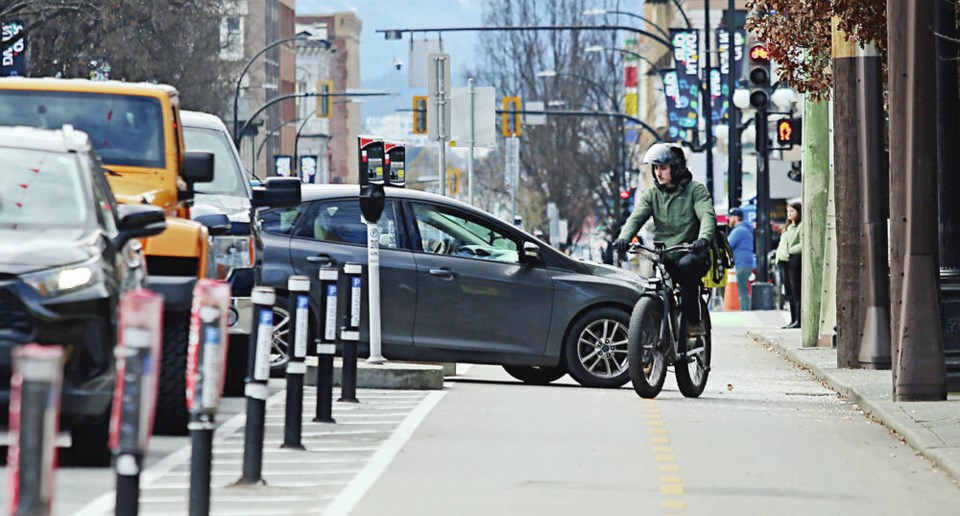There’s a new minimum distance that B.C. drivers must maintain when passing cyclists on roads.
Under changes to B.C.’s Motor Vehicle Act, drivers must maintain a distance of at least one metre when passing cyclists.
On highways with a speed limit above 50 kilometres per hour, that distance increases to 1.5 metres.
“These new regulations will keep people safer on our roads and encourage even more use of active transportation,” Rob Fleming, minister of Transportation and Infrastructure, said in a statement. “It’s another step in modernizing our rules to keep up with new technologies that are changing how people are getting around.”
Ross Kenny, assistant director of transportation at the City of Victoria, said the law now provides something measurable for passing-distance requirements.
Previously the legislation was more subjective, with motorists needing to provide “due care” when passing cyclists.
Kenny said the new regulations will take time to filter through and that public awareness campaigns will be needed. “Lots of people in the community obviously already have their driver licences, they’ve been driving for decades.”
“This is a step forward to generational change to road safety,” Kenny said. “We’ll take every opportunity we have to remind people of these regulations.”
The new minimum distances also apply to other vulnerable road users, which include motorcycles, animals or animal-driven vehicles, electric wheelchairs or mobility scooters, and electric kick scooters.
Police can issue violation tickets and fines to motorists who fail to maintain prescribed minimum-passing distances and proper precautions.
Penalties range from a $109 fine and three driver penalty points to a maximum fine of $2,000 and six months in prison.
Other changes to the act create a new class of light e-bikes, which can be operated by people 14 and older as opposed to the previous 16-year-old minimum age.
The light e-bike class has a lower maximum speed of 25 km/h instead of 32 km/h for standard e-bikes. Their motors have a maximum power of 250 watts, half that of standard e-bikes.
Instead of a throttle assist, light e-bikes can only provide power while pedalling.
Joel Satre, co-chair of Capital Bike’s advocacy committee, said the changes are welcome news. “But of course, enforcement is important here.”
Drivers don’t always follow the rules, Satre said. “They speed all the time in school zones, for example.”
Protected cycling infrastructure is still needed to insulate from drivers who are not acting according to the law, he said.
Another update in the Motor Vehicle Act prohibits fully automated self-driving vehicles without provincial authorization.
The updated act is expected to be in force starting on June 4.
The new rules come as the province renews a four-year pilot project to test electric kick scooters across several communities.
The pilot will continue for another four years, with new terms designed to reduce administrative burden on participating municipalities.
Pilot regulations allow anyone 16 and older to operate an electric kick scooter without a licence or insurance.
While communities are allowed to set their own bylaws as part of the pilot, overriding provincial rules require kick scooter riders to use designated cycling lanes or stay as far right as “practicable” on roads with speed limits of 50 km/h or less.
On roads where the speed limit exceeds 50 km/h, electric kick scooters can only use a designated cycling lane.
The B.C. government says it is using results from the pilot projects to decide how to make permanent regulations around the use of electric kick scooters.
On the Island, Victoria, Saanich, and Langford are pilot project participants.
Victoria had opted not to join when the program started in 2021 but signed on the program last month.
>>> To comment on this article, write a letter to the editor: [email protected]



